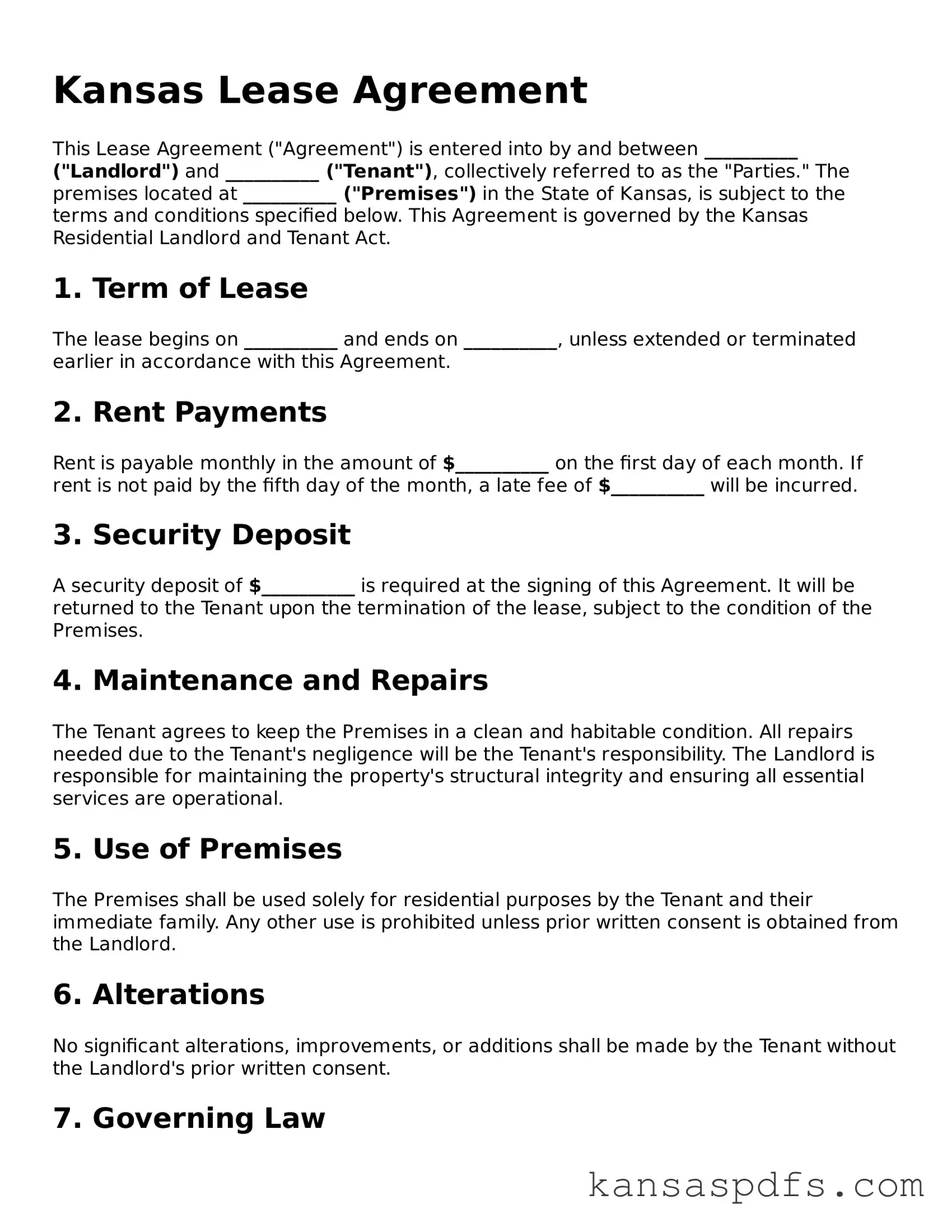Kansas Lease Agreement
This Lease Agreement ("Agreement") is entered into by and between __________ ("Landlord") and __________ ("Tenant"), collectively referred to as the "Parties." The premises located at __________ ("Premises") in the State of Kansas, is subject to the terms and conditions specified below. This Agreement is governed by the Kansas Residential Landlord and Tenant Act.
1. Term of Lease
The lease begins on __________ and ends on __________, unless extended or terminated earlier in accordance with this Agreement.
2. Rent Payments
Rent is payable monthly in the amount of $__________ on the first day of each month. If rent is not paid by the fifth day of the month, a late fee of $__________ will be incurred.
3. Security Deposit
A security deposit of $__________ is required at the signing of this Agreement. It will be returned to the Tenant upon the termination of the lease, subject to the condition of the Premises.
4. Maintenance and Repairs
The Tenant agrees to keep the Premises in a clean and habitable condition. All repairs needed due to the Tenant's negligence will be the Tenant's responsibility. The Landlord is responsible for maintaining the property's structural integrity and ensuring all essential services are operational.
5. Use of Premises
The Premises shall be used solely for residential purposes by the Tenant and their immediate family. Any other use is prohibited unless prior written consent is obtained from the Landlord.
6. Alterations
No significant alterations, improvements, or additions shall be made by the Tenant without the Landlord's prior written consent.
7. Governing Law
This Agreement shall be governed and construed in accordance with the laws of the State of Kansas.
8. Termination
Upon termination of the lease, the Tenant shall return the Premises to the Landlord in the same condition as at the beginning of the lease term, reasonable wear and tear excepted.
Signatures
This Agreement is executed on __________.
Landlord's Signature: __________________________________
Tenant's Signature: __________________________________
